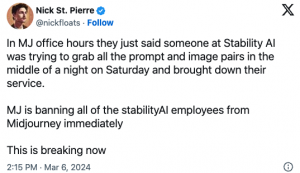Once upon a time there was Twitter, and it was fine. There was much to dislike about it, but it had the advantage of being the one central repository of all the chatter, for good and ill, and I coped with the badness by doing a lot of blocking.
Then it became “X,” and it was terrible and vile, and Elon Musk is a neo-Nazi idiot, so I left, cleanly and completely. That was a good decision on my part. So I started exploring the other social media options.
I got on Mastodon. It’s a bit clunky, and I still don’t understand some of the details, but I’m comfortable there. I like the diversity of content. Sometimes people are too weirdly judgmental, but it’s not my site, so I’ll adjust. It’s still on my recommended list.
I’m also on BlueSky, which is probably the most like the old Twitter. It’s more centralized than Mastodon, good ebb and flow of topics, and there’s actually a Science Bluesky. I’m sticking with it longer, we’ll see how it shapes up.
Then there’s Threads. I don’t know about Threads. It has a very different dynamic — people take the name literally, and there are a lot of threads, where they go on and on over multiple comments, and it’s beginning to bug me. Shouldn’t you just start a blog? People do write a lot, which is a positive. It’s a Zuckerberg production, which is a COLOSSAL NEGATIVE. I killed Facebook long ago, that was enough.
So, anyway, there can be only one, and I’ve decided to axe Threads. That means that in my head it is now a duel to the death between Mastodon and BlueSky.
Who else is on social media? What do you prefer? Don’t bother to tell me to abandon it all, I’m accustomed to my frequent tiny blips of interaction.












